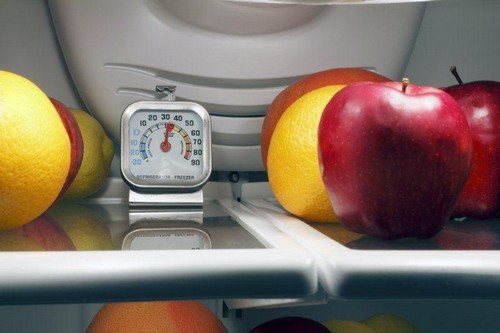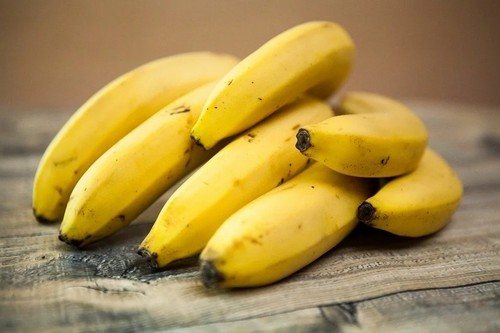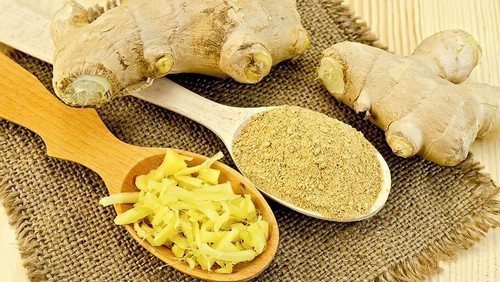Breast milk can be stored for a long time. But for how long, and will it be useful for the baby after that? On the one hand, they talk a lot about this, on the other hand, they want to know everything specifically. Take note of the advice of experienced mothers and follow the recommendations below.
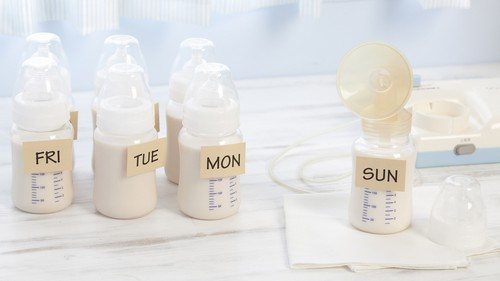
- Can breast milk be stored?
- How to Express Breast Milk for Storage
- Manual expression
- Breast pump
- How to store breast milk
- Glass bottles
- Plastic bottles
- Special containers
- Special packages
- In a thermos
- How to prepare a storage container
- Rules for storing breast milk
- In a refrigerator
- In the freezer
- At room temperature
- How long can breast milk be stored?
- Preserving colostrum
- Shelf life of thawed breast milk
- How to defrost correctly
- Is it possible to store warmed expressed breast milk?
- How to store breast milk while walking or traveling
- Is it possible to combine several portions together?
- How to keep it longer
- What not to do
- Video tips
Can breast milk be stored?
Fresh milk for a baby is an invaluable product, but there are reasons why a nursing mother cannot breastfeed her baby herself (she is forced to work, go to the hospital, leave urgently, etc.). In such cases, the milk is expressed and sent for storage. It is important not to lose its taste and beneficial qualities.
How to Express Breast Milk for Storage
Separation from your baby is not a reason to stop breastfeeding. Save food for a short period of time, or create a milk supply. There are manual and mechanical expression.
Manual expression
At home, the mammary glands are expressed manually. Breast milk is sterile, but in any liquid environment there is a danger of pathogenic microorganisms multiplying, which is extremely dangerous for the baby. Therefore, during the pumping process, it is important to strictly follow the rules of hygiene. Wash your hands thoroughly with soap, and just wash your chest with water to avoid cracks. Sterilize containers for collecting milk.
Breast pump
Make sure that expressing milk using a breast pump is painless and comfortable for you. First of all:
- take a warm shower and get another “flush” in your chest;
- drink hot tea with milk;
- relax, stroke your breasts, mentally directing the milk to its center;
- put on the suction and monitor its intensity level;
- Express breast milk into a glass bottle or special container;
- select a storage method.
To make the device last longer, after use, rinse all parts with running water and dry.
How to store breast milk
The containers used for storing breast milk must meet all the standards and requirements imposed on them. Pharmacies offer glass bottles and sterile polypropylene containers of a special composition that are safe for children.
Glass bottles
The most environmentally friendly option is to use glass bottles. At the same time, you will also save on used bottles with caps and jars of baby food. All the disadvantages of glassware are more than compensated for by its positive properties:
- it washes off perfectly;
- withstands all types of sterilization, incl. steam treatment;
- used repeatedly;
- non-toxic when heated.
Adviсe:
- Do not risk freezing the product in a glass container. Low temperatures freezer glass will not last long;
- glass may crack due to a sharp temperature change during heating;
- Keep glass bottles of breast milk on the refrigerator shelf. When frozen, the container may burst under the strong pressure of the increasing liquid.
Plastic bottles
You can also store breast milk in plastic bottles.
Bottles from Medela, Philips Avent, Canpol Babies are compatible with breast pumps, which allows you to express breast milk directly into the container. Bottles are available in different volumes - from 150 to 250 ml, with a scale for measuring the amount of expressed milk.
Special containers
Plastic containers for storing baby food have become widespread. They are not cheap (from 300 rubles and more), but they have advantages: the containers are durable, they can be used many times, they do not crack, you just need to wash them and pour boiling water over them. Manufacturers guarantee reliable tightness and safety, citing mainly the absence of besfinol A.
Bisphenol-A is a synthetic estrogen, synthesized in 1891 by the Russian chemist A. Dianin. It is used as an inexpensive hardener in the processing of plastics; it can be contained in baby bottles and plastic dishes. The substance has a negative effect on the brain, causing tumors of various origins, diabetes, obesity, and autism. Dangerous when heating or storing food or liquid for a long time.
In Russia, the production of baby bottles has begun by companies that have abandoned the use of this chemical compound. The “BPA-free” icon indicates the absence of this substance in the packaging.
Special packages
Plastic bags are sterile, easy to use, but expensive (average price: $10). Packages from Medela (from 800 rubles) and Avent (from 450 rubles) are popular among mothers. The package contains 25 bags of 150-180 ml:
- consist of two-layer polypropylene;
- the seams are additionally reinforced;
- The hole for pouring milk is wide;
- the base is stable;
- double protection clip;
- They are attached directly to the breast pump using adhesive tape.
After expressing breast milk, the bag is sealed and placed in the refrigerator. The bags have a graduated ruler and a place to write the date and time of pumping.
Before adding the product, squeeze out excess air from the bag and only then close it with the latch.
In a thermos
A real test for mothers is walking to the doctor or traveling long distances. A trip to the doctor takes time, during which the child has time to get hungry. A bottle of milk wrapped in a mitten quickly becomes cold in winter and sour in summer. Special thermoses help to store breast milk, maintaining its optimal temperature:
- thermos container;
- thermal bag;
- thermos refrigerator.
A thermos container is a simple, leak-proof container with a lid. The outside is lined with plastic, the inside is a thermal insulation layer (foam rubber or polystyrene). Porous materials conduct heat poorly, so a bottle placed inside will remain warm for 3 hours.
The thermal bag is convenient during walks.Externally it looks like a bag, inside there is a cavity for installing a bottle (or two). There are models with pockets for children's small items and diapers. Retains heat for 2-3 hours.
A thermos refrigerator will be a good help when traveling with a child over long distances. It is powered from the mains, and when using cold batteries, it can work for 15 hours, like a portable refrigerator. Without batteries, it “holds” the cold for up to 9 hours at an air temperature of +32 degrees. The durable fabric surface reflects the sun's rays well, and the walls are airtight. The thermos is compact and easily fits in the trunk of a car.
How to prepare a storage container
Prepare a clean, tightly sealed container for expressing. Make sure the container is heat treatable (glass bottles, jars, plastic containers). Polypropylene bags specially designed for this purpose do not require preparation.
Do not choose disposable tableware for this purpose! Below is a table of the suitability of plastic containers for freezing and heating milk.
| Designation (marking) |
Material |
Suitability of the container for storing milk
|
|
Polypropylene |
Safe to use, can withstand temperatures from -42° to +132°C.
Safe for storing, heating, freezing the product. |
|
|
Polystyrene |
Disposable tableware. chemically unstable, contains styrene - a carcinogen that penetrates into the product when heated.
Not suitable for storing expressed milk. |
|
|
Polyvinyl chloride |
A toxic and dangerous type of plastic, it contains phthalates, bisphenol A, heavy metals (lead, cadmium, chromium, formaldehyde.
Not allowed for use. |
Rules for storing breast milk
Breast milk is sterile.It has an ideal temperature regime for infants, a balanced composition and properties - antimicrobial, immunomodulatory, anti-inflammatory. Milk retains its valuable qualities for 4 hours after it was collected (at 28° C). Long-term storage requires low temperatures.
In a refrigerator
If you plan to store breast milk for a week, place the bottles in the refrigerator and follow these guidelines:
- Sterilize a regular container, otherwise the milk will quickly turn sour;
- Date the dishes with the time of pumping.
- Place the bottles closer to the back wall of the refrigerator, where temperature fluctuations are less (unlike the door).
The separation of milk into two parts (a fatty film at the top and a watery part at the bottom) is a common phenomenon that has nothing to do with the quality of the milk. Shake, the product will become homogeneous again.
If breast milk takes on a soapy smell, discard this type of storage. This sometimes happens in self-defrosting units.
In the freezer
The storage period of a dairy product depends on the power of the freezer, the frequency of its use and the location of the containers. Remember simple rules:
- freeze the product quickly, defrost slowly! Begin freezing by placing the bags in the top compartment of the freezer. The temperature is the lowest there. After complete freezing, place the bags lower (this applies to a separate freezer);
- Always freeze. Do not throw away breast milk, even if your baby refuses it. Later it will become an excellent addition to porridges, vegetable and meat purees, and desserts;
- Place in the freezer portions for one feeding (120-160 ml), otherwise the remaining defrosted milk will have to be thrown out.
At room temperature
Thanks to its bactericidal properties, breast milk remains fresh:
- at 15 °C – the whole day;
- at 22 °C – 10 hours;
- at 25 °C – 6 hours.
If you are leaving your baby for less than a day, you will not need a refrigerator. You can place the products in the basement, on the veranda, balcony, where it is cool (10-15°C). Rest assured that it will not spoil within 24 hours.
If there is a need to leave, cover the milk on top with a “breathable” material - several layers of gauze or a linen napkin ironed on both sides. This will protect breast milk from the sun, provide a small amount of oxygen, and prevent anything foreign from getting into it. You should not leave the bottle in the sun if you do not plan to quickly obtain the curdled product.

How long can breast milk be stored?
Breast milk can be stored for a long time. Canned, it can be stored for six months or more. It depends on your planning and execution of the program "maximum" or "minimum". In accordance with this, the following is created:
- long-term milk “bank” (when surplus is frozen, mother needs to leave for a long time, etc.)
- short-term supply (from several days to a week).
If you are going to store milk for a long time, keep it at a low temperature. When deep frozen, milk is able to retain its unique properties throughout the year.
Having decided on the program, you select the means: a thermal bag, a refrigerator, a freezer compartment or a separate chamber with low temperatures. Then the containers: glass containers - for short-term waiting (on the countertop, in the refrigerator); containers and sterile bags - for a long time (in freezers).
Preserving colostrum
Use an unusual type of milk container - a medical syringe. It is ideally suited for preserving colostrum. It is possible to express and store first breast milk not only after childbirth, but also during pregnancy.
Do this strictly with your doctor's permission! Excessive stimulation of the breast threatens premature birth.
While waiting for the baby, the following is done:
- colostrum is collected in a sterilized spoon, then in a syringe (5, 10 cc) and placed on the refrigerator shelf.
- the contents of 3-4 syringes collected per day are poured into a special sealed bag with a zipper, the storage start date is signed
- The package is sent to the freezer before delivery.
The table shows the shelf life of expressed milk and colostrum for a healthy baby:
| Storage temperature | Expressed breast milk | Colostrum |
| Room temperature 22°-25°C | 6 hours | 4 hours |
| Room temperature 18°-22°C | 10 o'clock | 12 o'clock |
| Room temperature 10°-12°C | 24 hours | 12 o'clock |
| Refrigerator +1° +3°С | 7 days | 24 hours |
| Refrigerator freezer -12° -18°С | 4-6 m. | 3m. |
| Deep freezing chamber -18° -24°С | up to a year | 3m. |
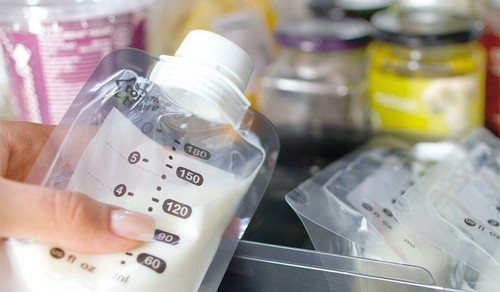
Shelf life of thawed breast milk
Proper thawing is extremely important for breast milk. One wrong step, and it will lose most of its nutrients, primarily enzymes and vitamins. Follow the basic rule: defrost slowly. Rapid defrosting will render the product useless.
How to defrost correctly
Containers and bags of the required volume from the freezer are placed on the middle shelf of the refrigerator until completely defrosted. After 6-8 hours, place the containers on the countertop, leave for another 2 hours at room temperature and reheat.
If you need to defrost breast milk faster, reduce the time it remains in the refrigerator and reheat it longer in warm water. As a last resort, defrost it at room temperature. If a frozen product is placed in boiling water, then immediately after heating you can safely pour it out, due to the lack of anything useful in it.
Is it possible to store warmed expressed breast milk?
The optimal temperature of breast milk for feeding a baby is 36-37 degrees. Overheating is extremely undesirable. The heating temperature is no higher than 40° C. At high temperatures, the same thing happens as with rapid defrosting - useful microelements and vitamins are destroyed.
There are different ways to heat frozen baby food:
- under running warm water, periodically shaking the contents;
- in water heated to a boil. Boil water in a bowl. Switch off. Place a bottle of milk in it and, shaking, wait for it to heat up. You can use an infrared meter.
- in a baby bottle warmer. It maintains the optimal temperature for heating at 37° C and eliminates overheating.
Heat thawed breast milk once and store it in the refrigerator for 24 hours.
Do not refreeze milk that has already been heated! Firstly, the quality will suffer, and this is unsafe for the child. During initial heating, air access opens to the product and various kinds of microorganisms penetrate there (in non-hazardous quantities). Unsterilized milk is again sent for preservation along with them. Microbes will “overwinter” well and, upon reheating, will dangerously multiply in the environment they most desire—warm liquid.
How to store breast milk while walking or traveling
When walking with your baby, it is convenient to use thermal bags. Their main function is to preserve cold. Inside there is a foil layer that helps maintain the temperature for 3 hours.
Cold storage batteries are included with the bag. These are sealed containers with a salt solution or special gel inside. They are frozen before use, then placed in a bag where the melting gel releases the cold. The shelf life of the product increases to 10-12 hours.
When traveling for a long time with a baby on a train or by car, it is convenient to use a car refrigerator. It connects to a power outlet or car cigarette lighter and cools the containers.
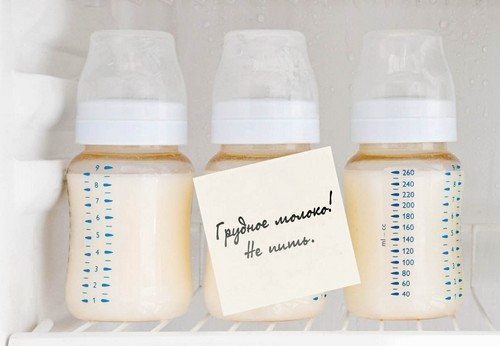
Is it possible to combine several portions together?
The bactericidal properties of the product allow mixing milk doses throughout the day. Cold milk is added to frozen milk in an amount of 1:3. The main thing here is not to defrost the main frozen mass. Food stored in the refrigerator is mixed in any proportions within 24 hours.
How to keep it longer
If, for a number of reasons, you do not plan to breastfeed your baby until 1.5-2 years old, then there is a need to preserve your milk longer. You will receive a fresh, healthy, vitamin-rich dairy product if you listen to the recommendations:
- containers must be clean and well closed;
- It is advisable to exclude contact with air and sun;
- freeze milk at different temperatures, including low.
- the container should be convenient and small in volume;
- use special containers, they are sterile and have a measuring scale.
What not to do
Mothers face a difficult task - to maintain the quality of expressed milk and eliminate any possibility of infection. Therefore, get some advice on what you definitely shouldn’t do:
- secondary freezing is an open gate for pathogenic microorganisms. You can't freeze it twice!
- A microwave oven is a destroyer of enzymes and vitamins and heats unevenly. Not recommended.
- Reheating the same defrosted portion is prohibited!
- Open fire for rapid heating and sterilization are unacceptable!
Listen to the advice, take it into account and feed your baby with breast milk. Storing breast milk means giving him a well-preserved, unique product for a long time, and the mother continuing to lead an active lifestyle.






